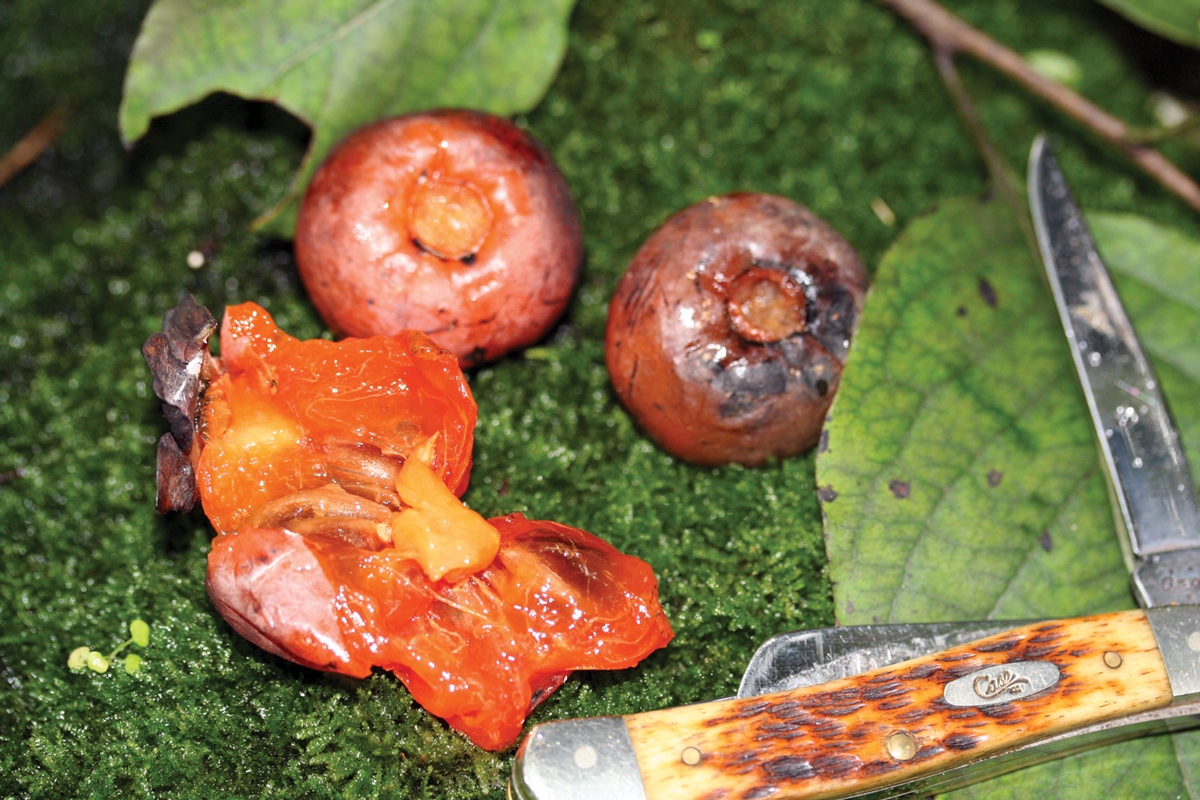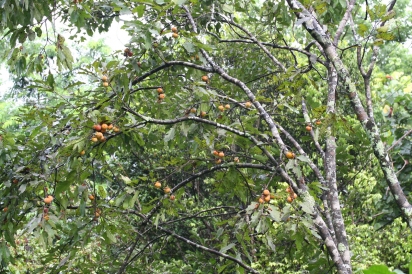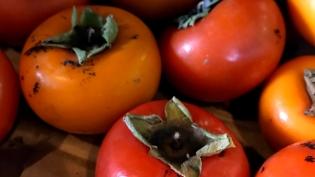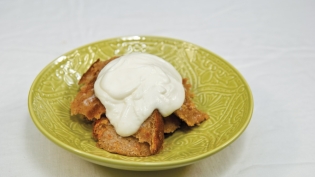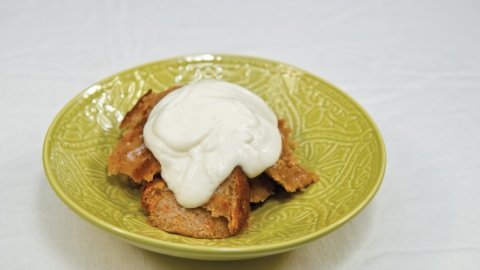A Brief Eclipse of the American Persimmon
I had made my Honey Bunches of Oats box viewer and followed all the safety precautions, and, well, ho-hum. The world took on an eerie gloom for a while, but I was not jolted into action or into deep self-reflection. Granted, I was in Homestead, so the eclipse was only partial. But somehow, I wanted more. Pensive and disappointed, I walked over to my ‘Guthrie’ persimmon (pictured below) and searched the ground for any ripe and fallen fruit; they lay in the mid-afternoon eclipse-induced twilight, quite unassuming. I ate the three nondescript fruit in solitary silence, basking in their complexity and exceptionality of flavor. Now, this was the celestial event I was waiting for.
The American persimmon (Diospyros virginiana) is an iconic North American native cherished and tended by native Americans throughout time. They identified and cared for groves of persimmons in the river bottoms, eating the fruit and planting the seeds of the best selections. Over the centuries these foraging horticulturists created a wealth of crop improvement for generations to come. Yet today we look upon the American persimmon with ambivalence. The fruit are small and don’t fit into our world of packaged products, skin-deep beauty and low everyday prices.
Fruit for the Soul
American persimmons are imperfect, rough-around-the-edges fruit with a palpable tenacity and adaptability. My father would refer to them as imperfectly perfect for survival. I found this description to be fitting, recalling a comparison to my own childhood existence at our very own fruit-forest homestead. Nothing of any real value was “perfect” to my way of thinking. The American persimmon is a relic of our horticultural past that has thrived on its imperfections. They provide context to our lives and are a constant in a world of change and uncertainty.
I have written before how this fruit captured my imagination and my heart at my annual birthday sojourn to the Everglades to collect floating fruit beneath remnant native groves. It would be hot and there would be mosquitoes, but it was real and no one I have ever known, besides my own children, could speak to the experience. I was always careful not to eat too much before these trips, lest I denigrate the taste experience, but honestly, it was never a problem. In those days, I was always hungry and the modest fruit never disappointed. They still do not. I look forward to this daily journey into the past. I see Tecumseh, the last great Chief of the Shawnee. He stands beside me and my father and children (the children are often actually there). We partake in the fruit reverently. The American persimmon fulfills that most basic of needs – hunger – while providing a more existential nourishment for the soul.
Growing Persimmons
The tree is perfectly adapted to South Florida, if you pay attention to some horticultural realities. You’re not likely to find trees in local nurseries, so instead challenge yourself to find local seed of persimmons, place them in a moist container in your refrigerator for about six weeks to help satisfy their cold requirement, grow them up to a half-pencil thickness and then graft with an improved selection. Go to local garden club or Rare Fruit Council meetings. Listen, talk and learn from your edible community. If this seems like a herculean effort to go to for such a fruit, consider this: the American persimmon will never make it to your grocery store shelves.
Perhaps this is how it should be. Do you really cherish the commercial fruit that you buy in the store on a routine basis? Grocery store fruit requires a short drive down the road. The American persimmon requires a lifelong commitment to its creation and care. The American persimmon I pick up from the ground each day is far from perfect, but it always amazes me. It takes my body and my soul back to a simpler time and reality when our food came from the soil, from our environment.
Sometimes it is good to remember that, particularly as the sun goes dim.
Pursuing American Persimmons
The American persimmon is on the Slow Food Ark of Taste, a living catalog of distinctive foods that face extinction. Some plant societies and garden clubs may carry seedlings, but availability may be difficult in the wake of Hurricane Irma, so online sources may be your best bet. The Rare Fruit and Vegetable Council of Broward County sells persimmon trees but has postponed its fall sale. They will be selling fruit trees and plants at the annual Bonnet House Museum and Gardens’ annual Orchid and Exotic Plant Sale Dec. 2-3.


